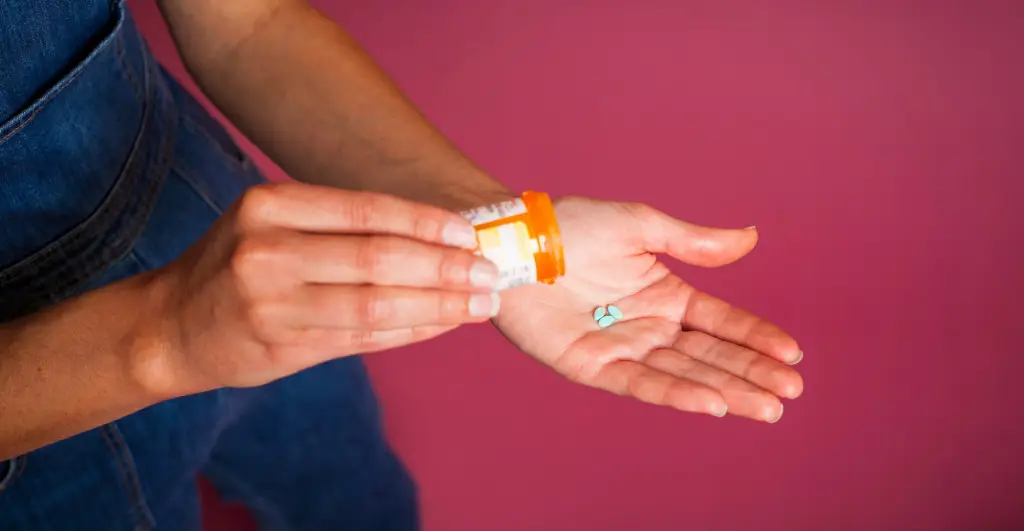By: Plume Community Member (she/her)
There are a few reasons why someone would want to microdose estrogen. “Microdosing” means taking a smaller dose than normal. Starting at a lower dose helps to ease your body and adrenal system up to the full dose of hormones. This means that many of us start on a lower dose and then have it raised over time.
So you know, microdosing is actually a normal part of beginning gender-affirming hormones. Most medical providers start trans people seeking estrogen on a lower dose as part of gender-affirming hormone therapy (GAHT, also called HRT or hormone replacement therapy.)
Who should be on a lower dose of estrogen?
A lower dosage of E might be a good fit if you are seeking changes that are less extreme. (This is common for many nonbinary or gender-nonconforming (GNC) transfeminine people, but your transition goals should always be treated as unique by your medical provider. There is no one size fits all approach to hormones.) Some people don’t want the full “feminizing” effects of E and are looking to land more “in the middle” of looking or feeling masculine and feminine. Other people want the mental or mood effects of taking E without more noticeable physical effects. For example, some people really like having lighter facial and body hair but aren’t interested in breast growth.
Know that no matter what your goals are, whatever you feel is right for you is a normal thing to want. People of all gender identities have unique health care needs, including hormone doses. Our understanding of gender has evolved so that we understand that not every trans person who takes HRT desires the full expression of the hormones.
Microdosing estrogen might also be right for people who feel they are not ready for more drastic changes or those who do not feel their home or community is safe enough for a more intense change in physical appearance.
Of course, your estrogen dosing should be discussed with your medical provider or Care Team for your safety. You will also discuss what delivery system you would like to administer your estrogen in: pill, shot, or patch. Your medical provider may also prescribe an androgen blocker, which is also called a T-blocker. One common blocker is spironolactone. These medications work by impeding (slowing or stopping) your body’s production of testosterone.
What happens when I take a lower dose of E?
Keep in mind that everyone’s body is different, and no one can predict the physical changes you’ll experience on even a low dose of E.
There are many changes, both physical and emotional, that can result from even a low dose of E. When I started microdosing, I found I shared the experience of many other trans or nonbinary transfeminine people. I felt a general ease and grounded feeling, even a low dose of E. My gender dysphoria lessened within the first month of microdosing. I did learn that many of us who microdose E would still feel the mood swings and a deeper emotional sensitivity. In my experience, this moodiness was less intense than on a full dose of estrogen.
Even low doses of estrogen can bring about physical changes as well, including softer skin, budding breasts, some fat redistribution, the prevention of further hair loss, and lightening of body hair. (This is also what happens when a low dose of E is paired with androgen blockers. Some people also add progesterone as a gender-affirming medication because they feel it helps create breast fullness and an affirming nipple shape.)
Will microdosing E be enough?
Some trans people start on low doses of E and find that they want a higher or full dose. Others may feel right at home with a microdose! Again, make sure you discuss with your medical provider any and all hormone dosing changes, including androgen blockers. What is right for you will be determined by talking about your transition goals, looking at your bloodwork, and creating a customized care plan.
There’s no one way to be trans and no one is more trans than anyone else! Finding the right balance in hormones to bring about the right physical and emotional changes for you should be up to each person to decide for themselves with the support of their doctor. For those who want more subtle changes, microdosing estrogen may be the key to bringing body and mind into alignment.
Make sure you are clear with your Care Team about what physical changes you are seeking through gender affirming hormone therapy. Together you can find the treatment that’s right for your body, your goals, and your individual needs.
This Plume Community Member (she/her) is a transfeminine creative and freelance writer. She lives in the Pacific Northwest with her wife and dogs.
As the largest provider of gender-affirming care for the trans and nonbinary community, Plume is committed to providing information about many types of information, including questions about hormones like estrogen and testosterone, gender transitioning tips and experiences, and guidance on social transition and self care.
While we strive to include a diverse range of voices and expertise, not everything will be for every person. Each individual’s experience is unique, and the information Plume provides is not intended to be a substitute for professional medical advice, diagnosis, or treatment.
Always first seek the advice of your primary and/or specialist physician, the Plume Care Team, or other qualified health provider with any questions you may have regarding a medical condition, your mental health and emotional needs, or your health care needs regarding gender-affirming hormone therapy. If you are experiencing an emergency, including a mental health crisis, call 911 or reach out to Trans LifeLine.



